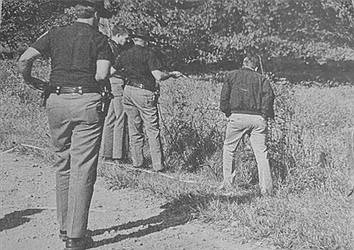The economic development commission reviews good month
April 20, 2022 at 12:48 p.m.
The Franklin County Economic Development Commission met April 11 and went over what president John Palmer and consultant Nick Lawrence of The Wheatley Group called a “good month and a busy month” after the lull of winter.
Lawrence continued a discussion about the I-74 Business Corridor, a regional economic development group focused on job attraction between Indianapolis and Cincinnati. He attended his first meeting April 8.
“They've talked about having a small committee for each community comprised of interested stakeholders and I'll continue to report at our meetings anything that we learn and discuss,” he said.
Lawrence said the meeting was “data heavy,” with a lot of North American Industry Classification System (NAICS) codes for each of the counties. The idea was to see where the workforce was, where losses and gains were, where growth potential could be relative to the surrounding area, and how leakage of investment going out of the region might come back in.
In talking with Southeast Indiana Growth Alliance, Lawrence said there's a strange strength that keeps appearing in the region's 'heat map' – ceramics and glass – for further exploration into such opportunities. Member Greg Orschell pointed out Anchor Glass in Greendale and Glass Pro and Batesville Products in Lawrenceburg as examples. Lawrence called these value-add pieces of the supply chain, enhancing the overall strategy.
Differences between sole proprietors, employer/owner and standard employment were also discussed in the I-74 meeting. The Purdue Center for Regional Development will further mine the data and a regional press release will come out at some point. Site visits are expected.
“The data sets are really good but are they reflective of what we know in the community?” pondered Lawrence.
Orschell received a call from Sen. Jeff Raatz about a USDA grant, specifically the Meat and Poultry Processing Expansion Program. Lawrence said he's open to it but wasn't sure whether it's closer to a feasibility study or actual expansion/capital expenditures. The application has a May deadline.
The program requires a significant investment of 20% of costs with a maximum of $25 million. Lawrence said it would be more likely for expansion of a current facility versus new construction. Orschell added he's talked to a banker about Risk Management Association numbers and return on investment for such a project is only about 4.8%. Lawrence, though, said he thinks “it's a rabbit hole worth running down” considering regions are working together with bigger pots of money.
Palmer noted the Reid Health installation continues on Highway 101. There will be many exam rooms and rotating primary care specialists, somewhere between 40 and 60 well-paying jobs and a potential opening late this year.
“It's clear Reid is trying to expand their footprint in this area,” he said. “And it never hurts to have three main health care providers, Reid, Margaret Mary Health and TriHealth. Especially when we look at this READI program (Regional Economic Acceleration and Development Initiative). They want a place to be more inviting for people to move in and healthcare is one of those things.”
Palmer went on to talk about READI, saying the Indiana Economic Development Corporation sent a document containing the agreement to get the $15 million awarded to the six-county Southeast Indiana contingent, to which Franklin County belongs.
He added the money is probably a couple months out but once it's deposited, the group can start looking at which programs to push forward for approval. The money needs to be obligated by the end of 2024 and project in place by the end of 2026.
The IEDC, along with Ernst & Young, will ensure the group complies with rules for federal funding; READI funds originate from the American Rescue Plan Act. Economic impact studies will also be available to help the group decide between similarly funded projects. Palmer feels this will remove any special or private interests from influencing the decisions.
He added that federal rules also cover the bid process and how contractors must adhere to certain guidelines. Wages will be a big factor and prevailing wage is attached to approved projects.
There are 57 READI projects in all and it's not realistic to fund all 57, said Palmer. Orschell asked about the private investment match.
Lawrence replied the state is willing to put in 20% of project cost and 80% comes from other sources outside READI funds; these can be both private and public.
Palmer relayed good news on the county's broadband expansion. Charter Communications (Spectrum) has committed to installing fiber optic lines across the county, starting near College Corner to Brookville and then west toward Metamora and Laurel.
The company will need to locate about 20 power cabinets to keep the system running. The commissioners and Palmer have committed to contact property owners and help them understand the process. By the end of the year, the basic system should be installed. Press releases will be issued to send out notices on road closures and where crews will be at a given time.
Funds came from the Federal Communications Commission's Rural Digital Opportunity Fund.
Note: The EDC is still looking to fill a vacancy on its 3-person board. The opening is for a Town of Brookville appointment as FC Council and Commissioners are currently represented.
Latest News
E-Editions
Events
The Franklin County Economic Development Commission met April 11 and went over what president John Palmer and consultant Nick Lawrence of The Wheatley Group called a “good month and a busy month” after the lull of winter.
Lawrence continued a discussion about the I-74 Business Corridor, a regional economic development group focused on job attraction between Indianapolis and Cincinnati. He attended his first meeting April 8.
“They've talked about having a small committee for each community comprised of interested stakeholders and I'll continue to report at our meetings anything that we learn and discuss,” he said.
Lawrence said the meeting was “data heavy,” with a lot of North American Industry Classification System (NAICS) codes for each of the counties. The idea was to see where the workforce was, where losses and gains were, where growth potential could be relative to the surrounding area, and how leakage of investment going out of the region might come back in.
In talking with Southeast Indiana Growth Alliance, Lawrence said there's a strange strength that keeps appearing in the region's 'heat map' – ceramics and glass – for further exploration into such opportunities. Member Greg Orschell pointed out Anchor Glass in Greendale and Glass Pro and Batesville Products in Lawrenceburg as examples. Lawrence called these value-add pieces of the supply chain, enhancing the overall strategy.
Differences between sole proprietors, employer/owner and standard employment were also discussed in the I-74 meeting. The Purdue Center for Regional Development will further mine the data and a regional press release will come out at some point. Site visits are expected.
“The data sets are really good but are they reflective of what we know in the community?” pondered Lawrence.
Orschell received a call from Sen. Jeff Raatz about a USDA grant, specifically the Meat and Poultry Processing Expansion Program. Lawrence said he's open to it but wasn't sure whether it's closer to a feasibility study or actual expansion/capital expenditures. The application has a May deadline.
The program requires a significant investment of 20% of costs with a maximum of $25 million. Lawrence said it would be more likely for expansion of a current facility versus new construction. Orschell added he's talked to a banker about Risk Management Association numbers and return on investment for such a project is only about 4.8%. Lawrence, though, said he thinks “it's a rabbit hole worth running down” considering regions are working together with bigger pots of money.
Palmer noted the Reid Health installation continues on Highway 101. There will be many exam rooms and rotating primary care specialists, somewhere between 40 and 60 well-paying jobs and a potential opening late this year.
“It's clear Reid is trying to expand their footprint in this area,” he said. “And it never hurts to have three main health care providers, Reid, Margaret Mary Health and TriHealth. Especially when we look at this READI program (Regional Economic Acceleration and Development Initiative). They want a place to be more inviting for people to move in and healthcare is one of those things.”
Palmer went on to talk about READI, saying the Indiana Economic Development Corporation sent a document containing the agreement to get the $15 million awarded to the six-county Southeast Indiana contingent, to which Franklin County belongs.
He added the money is probably a couple months out but once it's deposited, the group can start looking at which programs to push forward for approval. The money needs to be obligated by the end of 2024 and project in place by the end of 2026.
The IEDC, along with Ernst & Young, will ensure the group complies with rules for federal funding; READI funds originate from the American Rescue Plan Act. Economic impact studies will also be available to help the group decide between similarly funded projects. Palmer feels this will remove any special or private interests from influencing the decisions.
He added that federal rules also cover the bid process and how contractors must adhere to certain guidelines. Wages will be a big factor and prevailing wage is attached to approved projects.
There are 57 READI projects in all and it's not realistic to fund all 57, said Palmer. Orschell asked about the private investment match.
Lawrence replied the state is willing to put in 20% of project cost and 80% comes from other sources outside READI funds; these can be both private and public.
Palmer relayed good news on the county's broadband expansion. Charter Communications (Spectrum) has committed to installing fiber optic lines across the county, starting near College Corner to Brookville and then west toward Metamora and Laurel.
The company will need to locate about 20 power cabinets to keep the system running. The commissioners and Palmer have committed to contact property owners and help them understand the process. By the end of the year, the basic system should be installed. Press releases will be issued to send out notices on road closures and where crews will be at a given time.
Funds came from the Federal Communications Commission's Rural Digital Opportunity Fund.
Note: The EDC is still looking to fill a vacancy on its 3-person board. The opening is for a Town of Brookville appointment as FC Council and Commissioners are currently represented.





